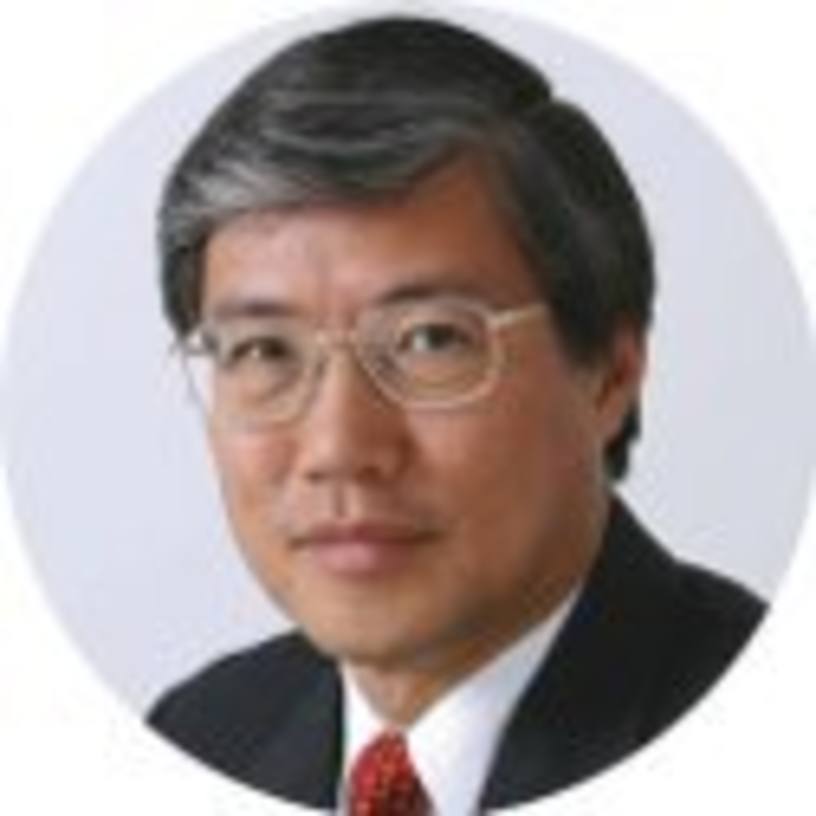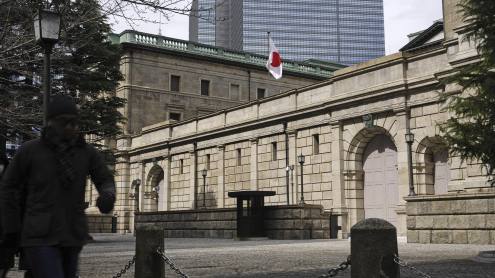Japan's place in the world economy today has two very different dimensions. The first dimension is its 15-year encounter with balance-sheet recession, the first advanced economy to contract this rare disease since the US during the Great Depression in the 1930s. What Japan went through in the 1990s can teach us a great deal about how to cure this disease, now afflicting countries which experienced burst housing bubbles, such as the US, the UK and Spain.
The second dimension is that Japan - after chasing the US and Europe in the 1970s - is now being pursued for the first time in its history. Since this is Japan's first experience of being chased, there is tremendous confusion among its business and political leaders about the right course of action. Europeans and Americans were similarly confused three decades ago by the Japanese onslaught.
A rare disease
On the first dimension, the US, the UK and many other countries are now faced with a balance-sheet recession. This type of recession is caused by the bursting of a debt-financed asset-price bubble, which leaves millions of private sector balance sheets underwater and in need of repair. This has caused the private sectors in those respective countries to shift away from the usual profit maximisation to debt minimisation. That, in turn, makes monetary policy largely ineffective, as institutions experiencing debt overhang are not interested in increasing their borrowings at any interest rates.
This shift of private sector priorities explains the extremely sluggish response of the recent US and UK economies, or the Japanese economy 10 years earlier, to massive quantitative easing and extremely low interest rates. In addition, with their private sectors either increasing savings or paying down debt, even with zero interest rates, these economies face the danger of continuously losing aggregate demand equal to the sum of savings and net debt repayment in a deflationary spiral.
With monetary policy largely useless, the only way for these governments to maintain gross domestic product levels is to borrow, spend the excess savings in the private sector and put them back into their economies' income stream.
Furthermore, this support from the government must be maintained for the entire duration of the private sector deleveraging. Any premature withdrawal of fiscal stimulus is likely to result in a collapsing economy and a much larger deficit, as premature withdrawals of fiscal stimulus in Japan in 1997 and 2001 demonstrated.
Maintaining fiscal stimulus in a democracy during peace time, however, is an extremely difficult task, as the recent uproar over the deficit in so many countries around the world has shown. But it is precisely this political difficulty that caused Japan to suffer an extra seven to eight years of recession after 1997, because the necessary medicine could not be administered in a consistent and seamless fashion.
There is no question that fiscal stimulus is an expensive remedy. But the Japanese experience reveals that fiscal consolidation will succeed only if the private sector is both willing, and able, to borrow and spend the money left unborrowed by the government's fiscal reform efforts.
When Japan fell into a balance-sheet recession, no one knew that such a disease existed, and all sorts of measures ranging from quantitative easing to structural policies were employed in a trial-and-error fashion. After all, neoclassical economics taught in universities never prepared us for a world in which the private sector minimises debt instead of maximising profits. Now that the new disease has been identified, the US and the UK should be able to avoid the time-wasting and deficit-increasing premature fiscal tightening by looking at the Japanese example.
The art of catching up
On the second dimension, since the Meiji Restoration more than 140 years ago, Japan has been playing catch-up with the West, and the country's efforts have been remarkably successful. Apart from housing, Japan has caught up with the West in most areas, and has even overtaken it in some.
For the past 10 years, however, Japan has been pursued by China. But Japanese society, which has been organised and optimised around the theme of catching up, is ill-equipped to deal with these encroaching challengers. This is because the Japanese have been trained to keep their eyes on those in front of them, not on those closing in on them.
China is, of course, not just chasing Japan, but everybody else in the advanced world as well. But US and European societies have learnt from the Japanese challenge and made adjustments. Americans, for example, were the most confident people in the 1960s. By 1975, however, they were losing faith in themselves, not only because of what was happening in the Vietnam War, but because they were losing out to the Japanese in so many areas where they thought they were unbeatable. Those areas included steel, machine tools, ship-building, semiconductors, cars and household appliances.
Learning curve
From that time on, the phrase 'Japanese management' became all the rage in the US because it was thought that Japan, from an industrial perspective, was doing everything right and the US was doing everything wrong. It was also during this period that Japanese corporate employees with mediocre grades were still welcomed by the best US business schools, because the latter wanted Japanese input so desperately.
After nearly two decades of soul-searching, coupled with various protectionist measures against the Japanese imports of cars and semiconductors, the Americans came to realise that, in order to shake off its challengers, it needed to advance even faster by constantly developing new products and services. It also realised that in order to maximise the flow of new ideas, employees who came up with new ideas should be rewarded handsomely. That, in the essence, was the so-called supply-side reform.
The reform contributed in no small way to the growth of everything from Google to the iPod and re-established the US lead in many product and service areas. The reform also had a dark side, however. Only 20% of the US population - the 20% that were able to generate new ideas - saw their incomes rise. The remaining 80% saw their relative income stall or even fall, as Japanese, Koreans, Mexicans and the Taiwanese began to replace their high-paying jobs.
Meanwhile, the same thing was happening in Europe. In the early 1960s, few people believed that the Japanese Canon or Nikon would take over the global camera industry. In those days, quality cameras meant Leica, Zeiss and Rollei cameras from Germany. By 1975, however, German camera production had slowed to a virtually standstill. Those Germans who could move to more advanced areas retained their income growth, but those who could not saw their living standards stagnate or decline.

Taking on the world: the global dominance of camera giants Canon and Nikon is a result of Japanese companies successfully moving in on the territory of Western brands in the 1960s and 1970s. Japan now faces the problem of being pursued by companies from emerging Asian economies
Looking to the West
As it happens, Japan was once pursued by the Koreans and Taiwanese. But both countries were relatively small players who often needed Japanese parts or technology. The Chinese, on the other hand, already possess sufficient home-grown technology to produce everything from nuclear submarines to space rockets, and their coffers are exploding with export earnings. With a highly motivated 1.3 billion population willing to work for a fraction of Japanese or Western wages, the challenge China (and, before long, India) poses for the advanced economies is nothing short of monumental. And the challenge is bigger for Japan because of its relative inexperience as the one being pursued.
Fortunately for the West, the tradition of liberal arts education has always trained people to think independently and encouraged them to pursue new ideas. That tradition, in turn, has allowed those societies to come up with new ideas in areas ranging from high-tech to music to fashion. In Japan, on the other hand, where the emphasis was on catching up, new or different ideas were not always encouraged. Staying mainstream was often the key to social success.
However, the Japanese can look at the examples of the US and Europe to see what kind of reform is necessary to shorten the adjustment period. They have also proven themselves to be highly capable innovators, but more innovations are needed to support the economy of 120 million people. By learning from the West, Japan should be able to skip the trial-and-error period and go straight to the core of the problem: maximise the number of people able to generate new ideas.
In conclusion, it is arguable that the West today is where Japan was in the 1990s, and Japan today is where the West was in the 1970s. Both can learn a huge amount from the other, and the speed of necessary adjustment is likely to depend critically on how fast they learn from the other's experiences.












